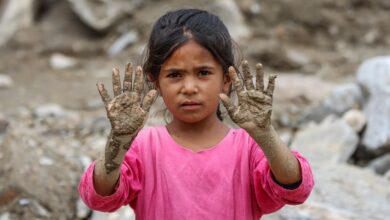Global unemployment is on the rise
The World Employment and Social Outlook: Trends 2020 (WESO) report, which was released on Monday, revealed some worrying figures.

Two persons during an interview. / Photo: Pexels – Reference image
The Woman Post | Luisa Fernanda Báez Toro
Listen to this article
Leer en español: El desempleo global está en aumento
The report, published by the International Labour Organization, said that moderate or extreme working poverty is expected to rise between 2020 and 2021 in developing countries, which increases the obstacles to achieve Sustainable Development Goal 1 on eradicating poverty everywhere by 2030.
Currently, working poverty is defined as earning less than USD 3.20 per day and affects over 630 million workers, or one in five workers globally, according to IISD.
As read on Bloomberg, this annual report analyses key labour market issues, including unemployment, working poverty, income inequality, labour underutilisation, labour income share and factors that exclude people from decent work.
"For millions of ordinary people, it's increasingly difficult to build better lives through work," ILO Director-General Guy Ryder said.
"Persisting and substantial work-related inequalities and exclusion are preventing them from finding decent work and better futures. That's an extremely serious finding that has profound and worrying implications for social cohesion," Ryder said.
According to the report, among the 11 subregions of the world, the unemployment rate is highest in North Africa (12 per cent) and Central and Western Asia (9 per cent), while the lowest rates are observed in South-East Asia and the Pacific (3 per cent) and North America (4 per cent).
Also, the report highlights the fact that having a paid job did not guarantee decent working conditions or an adequate income for many of the 3.3 billion employed worldwide in 2019.
Actually, the lack of income or other means of financial support in these “work places”, leads workers to engage in informal jobs, which offer low pay and provide little or no access to social protection and rights at work.
As read on the Economic Times, at least 267 million young people between the ages of 15 and 24 are not in employment, education or training, and many more endure substandard working condition.
Also read: Women, STEM careers is what you should opt for
What about women?
The results also show huge gender inequalities. According to the report, in 2019 the female labour force participation rate was just 47 per cent, 27 percentage points below the male rate.
Also, gender stereotypes that emphasize the role of women as the main caregivers remain deeply ingrained in some regions. For example, in North Africa and in the Arab States, these biases affect around 40% of women in the extended labour force.
"Labour underutilisation and poor-quality jobs mean our economies and societies are missing out on the potential benefits of a huge pool of human talent," said the report's lead author, Stefan Kuhn.
"We will only find a sustainable, inclusive path of development if we tackle these kinds of labour market inequalities and gaps in access to decent work," Kuhn said.




